A large swath of grass in my front lawn remains stubbornly brown and frail, long after April rains have washed away winter debris. The patch, roughly the shape of Australia, jets up against a stone walkway leading to our front door. I left the patch for a while, hoping grass would find its footing and regrow. But last night my oldest daughter criticized the yard by declaring our house looks woefully abandoned. She’s a teenager, and while tough to hear, this criticism is typical for adolescent youth developing their intellectual independence. I laughed at her opinion, but secretly cried inside.
So I set about raking up the grass. I whacked through nearly half of the area until I realized large clumps of soil kept coming up with the rake. This grass wasn’t just dead. It was destroyed. I peered close to the surface and discovered a constellation of grey Japanese beetle grubs nestled into the dirt. I wasn’t fixing winter kill, I was combatting pest activity killing the lawn. Disgusted, I abandoned the rake in the middle of the grass pile and stormed inside.
Part of me was relieved to have discovered the culprit. A bug! A pest! Something I can address by soliciting help from my local garden extension center or favorite nursery. I even collected a few grubs in a discarded glass jar to provide primary evidence of the problem.
The other part of me — the gardening side — felt defeated. I really despise the thought of putting this much work into resuscitating grass. It’s not the best part of our yard.
Later, after dinner I sat by the front window to contemplate my next step. Soon a robin landed in the middle of the dead grass. How curious. Why would a robin land in a spot of lawn that must not feel good on its claws when it could just as easily have landed on a stretch of soft, green grass? Pluck, pluck, pluck went its beak, furiously rooting around the loamy wound of bare soil, collecting grubs. Hasty raking led to open season for the robin. My loss, its gain.
Birds frequent our yard all year long. A cardinal perches atop a low slung telephone wire; its arrival marking my early morning movements in the living room where I sit with a cup of coffee and watch the sun rise. Wrens and sparrows gather dead leaves to build nests high in our trees. Once, a hawk spent a week in our backyard, clutching a patio chair, eyes cocked downward toward the woodland garden waiting for scurrying mice and other tiny rodent prey to emerge. The hawk’s arrival, and its decision to stay in our yard, transformed our garden experience into something almost sacred. We crept quietly past its perch during daytime hours. We loved knowing it chose our yard for respite. When it finally flew away, we collectively felt a loss.
Birds bring poignancy. Symbolic, ecological, spirited.
So when I received the most beautiful gift in the mail two weeks ago from a reader of Roots & Vines, I read it as prophetic: a cobalt blue handmade ceramic bird bath shipped directly to my door step. The reader, a distant family member who I met only once but who found me (and my words) on Substack, wanted to contribute to my garden by sharing her favorite bird bath.
There’s something remarkable about watching your words live beyond your imagination; to know your writing stirs a reader in such a way that they reciprocate by sharing a gift straight from their heart. I unpacked the bird bath, found a spot in a large garden in a low dip of the yard — a spot where most of my native flowers grow — and placed it amongst the Joe Pye Weed, yellow loosestrife, and marsh marigolds. If I stand at my back door even now I can see the bird bath perfectly framed by trees.
And then five days after I set up the bird bath, I learned this reader died suddenly.
Life is cruel.
Birds share our yard with us. Robins devastate grubs buried beneath dead grass. Hummingbirds covet my night-blooming jasmine. A cardinal sings good morning to me while watching from high up in its perch. They are welcome, and so is Marian, whose bird bath arrived just before she left earth.
I find manicured yards overrated; grass with sharp edges, shrubs awash in an endless square of neon green blades leave little to dream about. The Royal Horticultural Society agrees, encouraging gardeners to “mow the lawn less and let wildflowers and wildlife thrive.” I’ll consider our yard’s dead patch and resident birds as evidence that what I cultivate includes more than just gardens. It’s a whole ecosystem, fit with both life and death.
Dedicated to Marian Sperry, who lives amongst the stars.
To read more essays about spring and summer gardening, check out these fellow garden writers on Substack:
- , Cultivating Color
-
See you next week with a new poem.
-Betsy

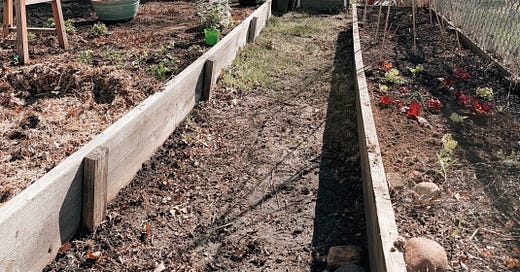



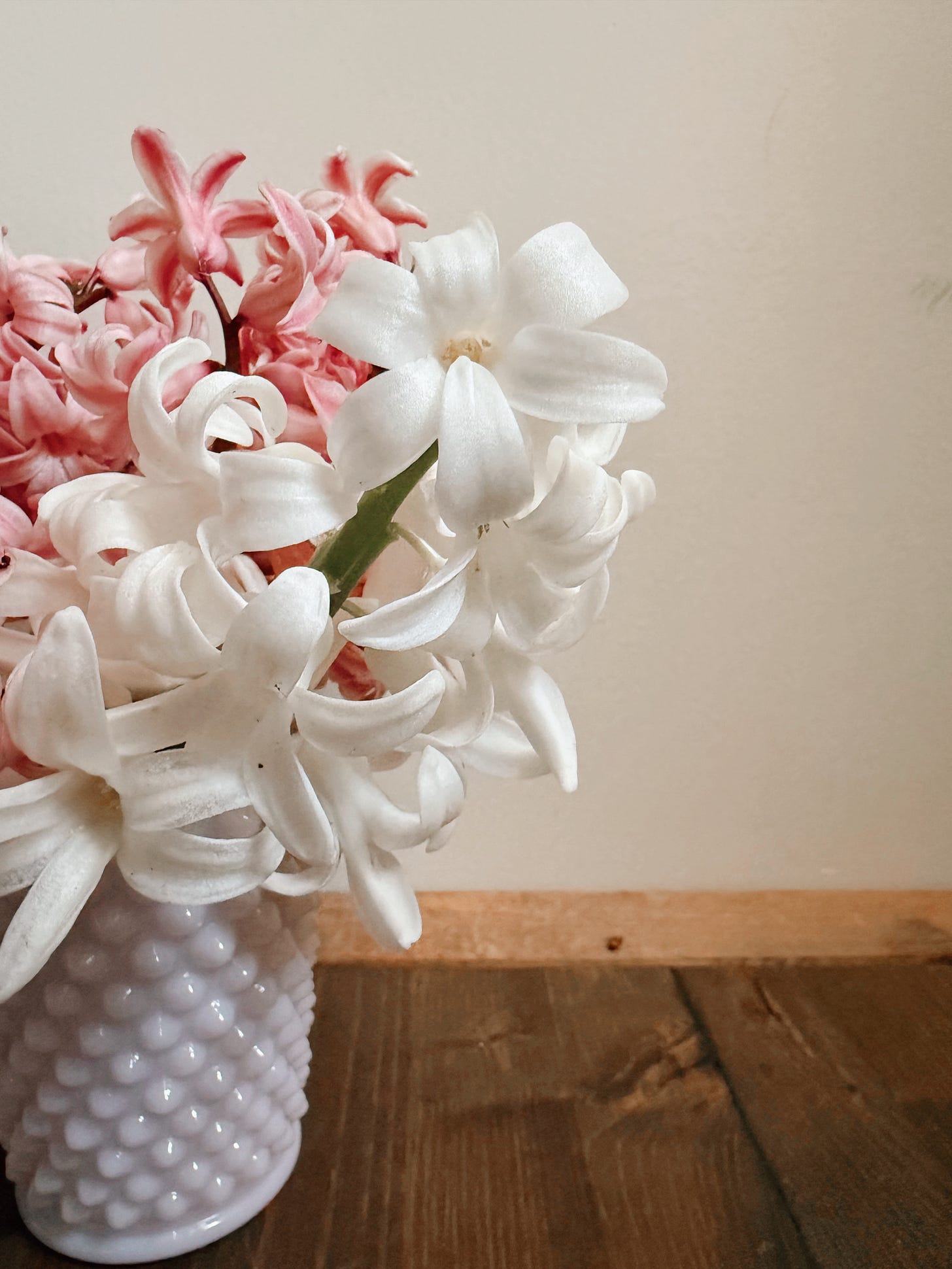
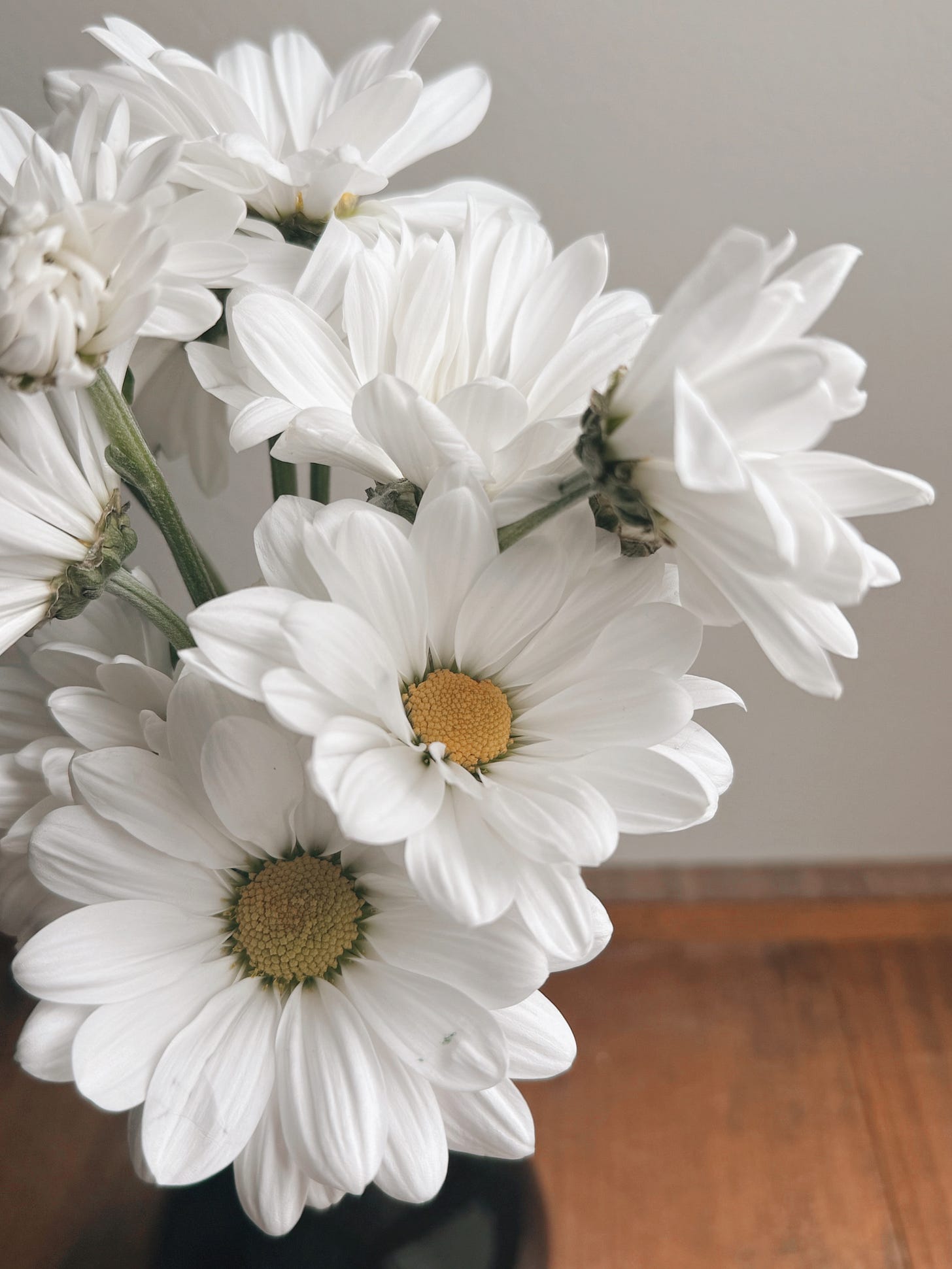
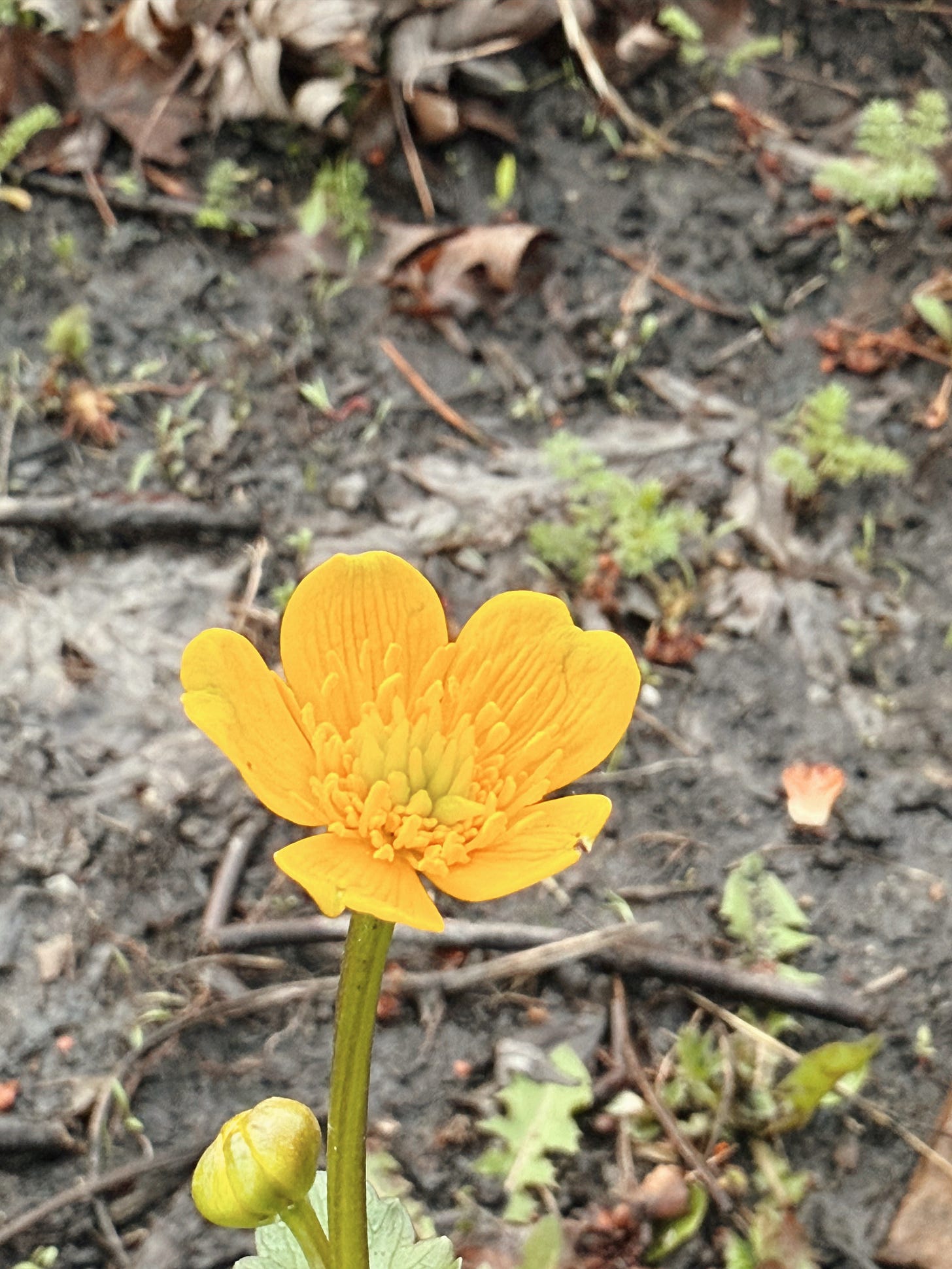
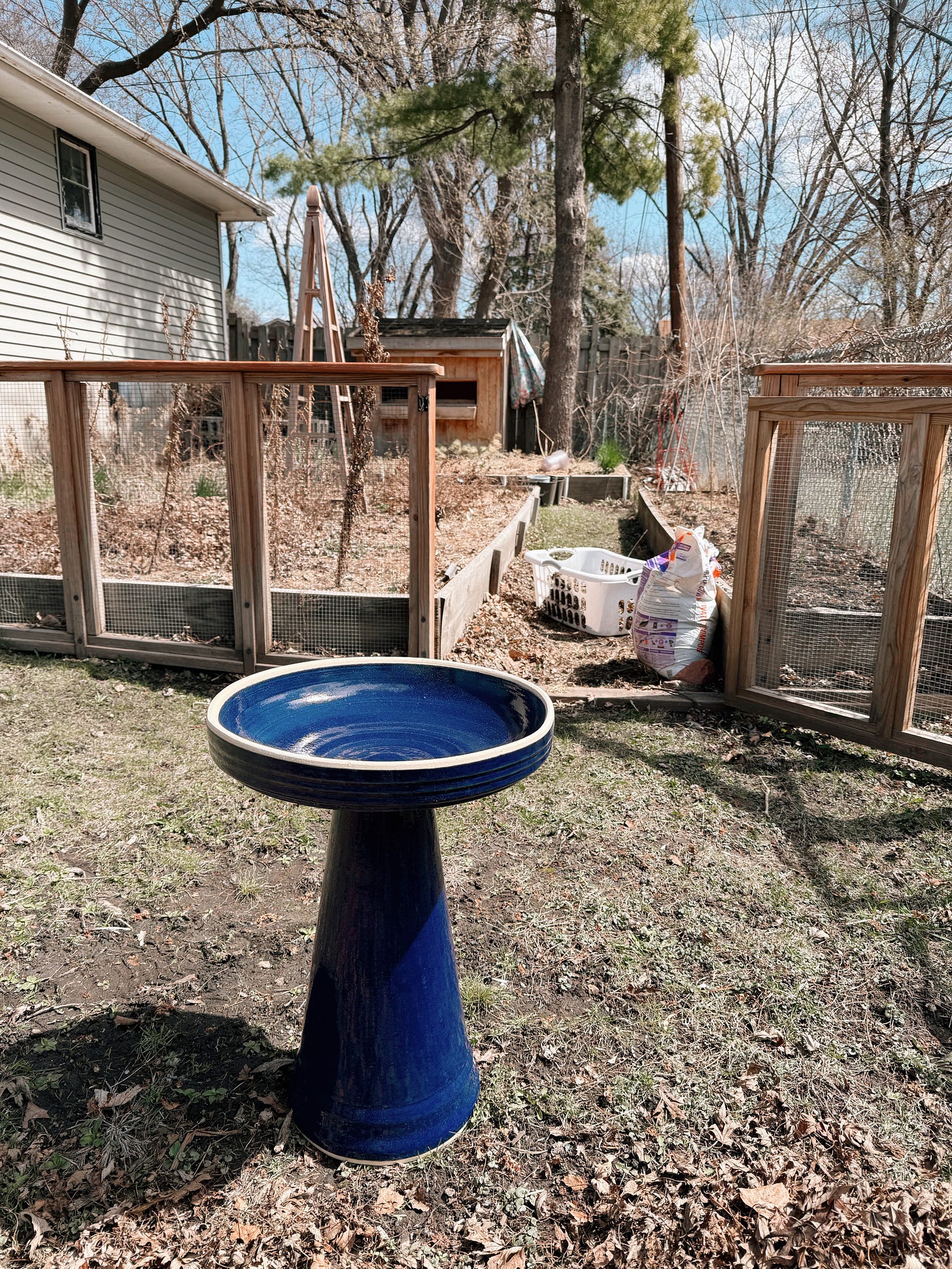

What a beautiful tribute! I am sorry to hear about her leaving this earth, and love that she will live on in your garden in a way of her choosing. ❤️
Oh, wow. The timing on this is both devastating and beautiful. I love you, B. I love your writing, thank you for sharing yourselves with us. We are so lucky to know you in this way.